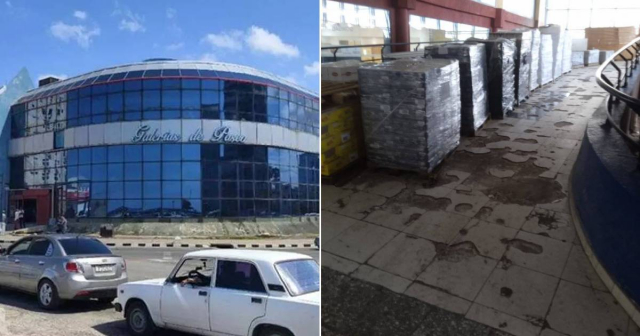The Cuban government is on track to once again fail to meet its housing construction plans, exacerbating the already critical housing situation in the country.
Despite repeated official announcements and promises of improvement, by the end of August 2024, only 39% of the annual plan has been completed, according to data presented in a recent meeting with governors, led by Prime Minister Manuel Marrero Cruz.
This percentage represents the completion of only 5,262 homes out of the 13,500 projected for this year, a fact that demonstrates the regression of the sector compared to previous years.
The information, released somewhat cautiously by the official portal Cubadebate, highlights the difficulties the Cuban regime faces in housing construction, a key area for the well-being of the population.
The provinces most affected by these failures are Havana, Camagüey, Las Tunas, Santiago de Cuba, and Guantánamo, although specific details by territory were not revealed in the report.
The causes of the setback
According to the authorities, the crisis in housing construction is related to "organizational cracks" and "significant resource limitations"; however, no further details were provided regarding the available materials or the reasons behind the drop in production levels.
Nancy Acosta Hernández, head of the Office for Local Administration Attention of the Council of Ministers, mentioned the fragmentation of the housing program at the territorial level and the lack of trained personnel as key factors in this setback.
Furthermore, the basic infrastructure of the material production centers is in a deplorable state, which further hinders the achievement of construction targets.
These problems are exacerbated by a lack of coordination between the different governmental structures, which has been identified by regime officials as one of the main causes of low execution.
Despite these obstacles, the government insists on the need to reverse the situation. Marrero Cruz acknowledged the shortage of cement and steel, essential for construction, and admitted that no substantial change in the production of these materials is expected in the short term.
However, in an attempt to keep the housing program active, the government resorted once again to its worn-out slogan of "reinforcing local materials production," a strategy that has proven to be insufficient in previous years.
A bleak panorama
The data doesn't lie: in the last four years, the construction of housing by the Cuban State has decreased by 64%, according to figures from the National Office of Information and Statistics (ONEI).
While in 2019, 15,491 homes were built, in 2023 only 6,205 were completed. This sustained decline reflects not only the lack of resources but also the government's inability to effectively manage the sector.
Over the years, the number has been decreasing at an alarming rate: in 2020, 13,865 homes were built, in 2021 the number dropped to 8,741, in 2022 it was at 8,103, and in 2023, it was only 6,205.
This pattern has led to a critical situation, where the housing deficit continues to worsen, affecting hundreds of thousands of Cubans living in overcrowded conditions or in structures at risk of collapse.
The seriousness of the problem is reflected in the proliferation of collapses, especially in cities like Havana, where aging and poorly maintained buildings frequently collapse.
Every year, entire families lose their homes due to these deplorable conditions and end up living in shelters or in overcrowded situations.
A problem with no solution in sight
The housing deficit continues to be one of the biggest challenges for the Cuban government. Despite promises of better management and decentralization of resources to the municipalities, the results remain insufficient.
The local production of materials, proposed as a solution, does not seem able to meet the demand, and the levels of cement and steel remain too low to fulfill the established plans.
The outlook is not encouraging for Cubans who are still waiting for decent housing. The solutions proposed by the government seem insufficient in the face of a problem that has worsened over decades, without a clear resolution in the short or medium term.
One of the most criticized aspects by the population is the priority that the Cuban government gives to the construction of hotels and other tourist infrastructures compared to housing for the population.
Despite the shortage of cement and steel for housing, these materials do not seem to be lacking when it comes to tourism projects. This situation has generated increasing discontent among the citizens, who see how their basic demands remain unmet.
Five years have passed since Díaz-Canel called for prioritizing housing construction.
In May 2019, just a month after assuming the position for which he was appointed by General (r) Raúl Castro Ruz, the Cuban leader Miguel Díaz-Canel urged prioritizing the state housing program due to its "high impact" on the population and called for efforts to work on several solutions to this issue in the country, official media reported today.
In a meeting that specifically examined the issue of housing, Díaz-Canel stated that the "incentive" of locally produced construction materials is one of the fundamental ways to gradually resolve this matter.
Far from having advanced in this vital program, the government of the so-called "continuity" has only regressed and stagnated the construction of housing and the production of construction materials, as a result of the poor management, paralysis, and corruption prevailing in the Cuban regime.
What do you think?
COMMENTFiled under:
